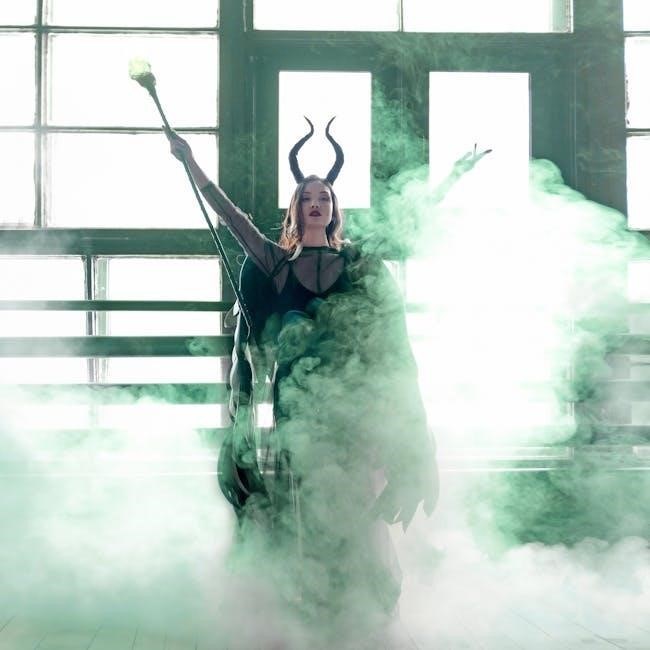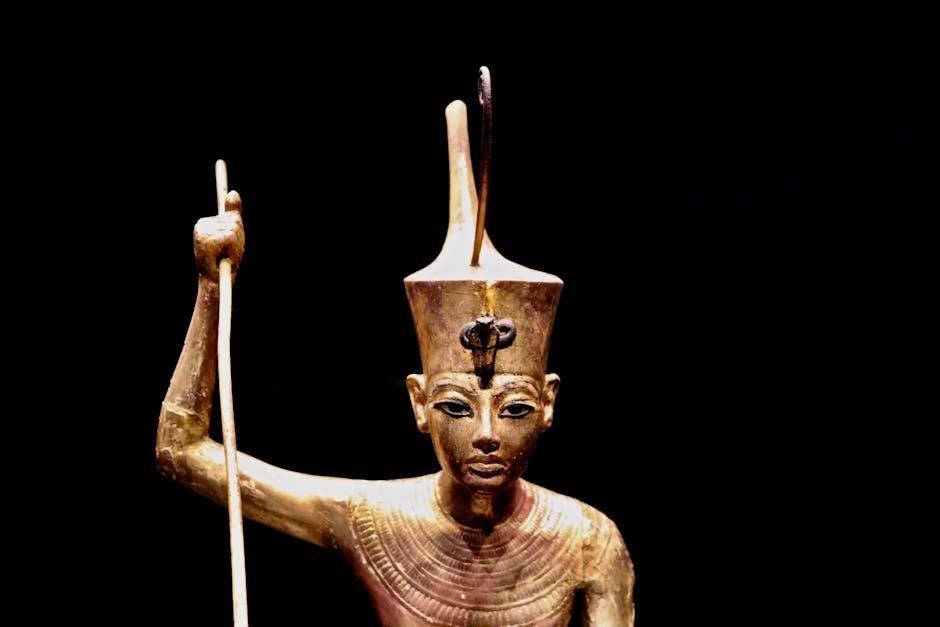Definition of Legend
A legend is a narrative handed down through time, often popularly regarded as historical but not always verifiable․ It blends real events with imaginative elements․
Legends are traditional stories blending historical facts with imaginative storytelling․ They may include supernatural beings, elements of mythology, and local explanations․
Traditional Story with Historical Basis
Legends are narratives passed down, believed to have roots in human history․ While often embellished, they are perceived as having some basis in reality․ They frequently focus on human actions, and may demonstrate cultural values․ Although legends may include miracles or supernatural events, they are distinct from myths due to their perceived historical connection․ Legends are often associated with specific people, places, or events, contributing to their sense of authenticity․ The key is that they feel like they could be true․
Blend of Fact and Imagination
Legends expertly weave historical kernels with imaginative storytelling, creating captivating narratives․ These tales often embellish real events, incorporating supernatural elements or exaggerating human feats․ This blend distinguishes legends from strict historical accounts․ The imaginative additions serve to heighten the story’s impact, conveying moral lessons or cultural values․ This creative license also allows legends to adapt over time, reflecting changing societal beliefs․ Ultimately, legends offer an engaging, albeit not always entirely accurate, glimpse into the past, filtered through cultural memory and creative interpretation․

Characteristics of Legends
Legends typically focus on human actions believed to have taken place in history․ These narratives often demonstrate human values and possess qualities of verisimilitude within their cultural context․
Focus on Human Actions
Legends, unlike myths, center around human actions, often those of heroes or significant figures․ These actions are believed to have occurred within the realm of human history, even if embellished․ They showcase extraordinary feats, moral choices, and the consequences of decisions․ The focus remains on the human element, emphasizing the impact of individuals on events and societal values, making the narrative relatable and impactful to audiences across generations․ These actions often serve as moral lessons․
Verisimilitude and Moral Values
Legends strive for verisimilitude, aiming to appear believable, even with fantastical elements․ They often demonstrate human values, reflecting societal norms and moral codes․ These stories serve as vehicles for conveying ethical lessons, emphasizing virtues like courage, honesty, and loyalty, or warning against vices․ Through the actions and consequences depicted, legends reinforce cultural values, providing a framework for understanding right and wrong․ The blend of realism and moral instruction makes legends powerful tools for shaping behavior and transmitting cultural heritage․

Types of Legends
Local legends are stories tied to specific places, explaining origins or events associated with that location․ They often feature local landmarks and historical figures․
Local Legends
Local legends are narratives deeply rooted in specific geographic locations, often explaining the origins of place names, landmarks, or peculiar local customs․ These stories frequently involve historical figures or events that are significant to the community’s identity and collective memory․ They serve to connect people to their environment and to each other, reinforcing a sense of shared history and belonging․ Local legends can also act as cautionary tales, reflecting the values and beliefs of the local population, thus preserving cultural heritage․
Personal Legends
Personal legends, unlike local or historical narratives, center around the extraordinary lives or achievements of individuals, often embellished and passed down through families or communities․ These stories highlight a person’s unique qualities, virtues, or accomplishments, transforming them into figures of admiration and inspiration․ Personal legends often serve as role models, embodying values such as courage, perseverance, or ingenuity․ Over time, the factual details of their lives may become intertwined with fictional elements, enhancing their legendary status and impact on future generations, thus inspiring others․
Examples of Famous Legends
King Arthur is a famous legend․ The legend of King Arthur is known around the world․ Arthur was a famous king in a legend that may or may not be true․
King Arthur
The legend of King Arthur is a cornerstone of British folklore, depicting a noble king who defended Britain against Saxon invaders․ He is often associated with the mythical sword Excalibur, the wizard Merlin, and the Knights of the Round Table․ Stories of Arthur’s courage, chivalry, and his quest for the Holy Grail continue to inspire and captivate audiences worldwide, solidifying his place as a timeless legendary figure․
Robin Hood
Robin Hood is a legendary outlaw from English folklore, known for his acts of robbing the rich to give to the poor․ Often depicted as a skilled archer and swordsman, he resided in Sherwood Forest with his band of Merry Men․ Tales of Robin Hood’s defiance against corrupt authorities and his championing of the oppressed have made him a symbol of justice and rebellion, resonating through centuries of storytelling․
Legends in Literature
Legends in literature often incorporate supernatural elements, blending reality with the extraordinary․ These additions enhance the narrative, creating a sense of wonder and moral depth․
Use of Supernatural Elements
Legends in literature frequently employ supernatural elements, weaving them into the fabric of historical or quasi-historical events․ This incorporation of the fantastic—miracles, mythical creatures, magical objects—serves not only to embellish the tale but also to imbue it with deeper symbolic meaning․ The supernatural often highlights moral lessons, reinforces cultural values, or provides explanations for otherwise inexplicable phenomena, thus enriching the narrative’s impact and enduring appeal․
Exaggeration of Events
Legends often feature an exaggeration of events, amplifying the scale and impact of real or perceived occurrences․ This embellishment serves to heighten the dramatic effect and solidify the legendary status of the figures and actions involved․ Heroes become larger than life, challenges become insurmountable, and victories become all the more glorious through the artful inflation of historical details․ This exaggeration helps to immortalize the story․
Legends vs․ Myths
Legends are often associated with specific locations or persons and are told as part of history․ Myths include supernatural beings, elements of mythology, or explanations of natural phenomena․
Historical Connection
Legends are frequently rooted in historical events or figures, though these are often embellished over time․ They differ from myths, which typically deal with gods, creation, and fundamental beliefs․ While myths explain the unexplainable, legends offer a narrative tied to a specific time and place, even if the details have become exaggerated․ Legends tell of human actions perceived to have taken place in human history․
Religious Significance
Legends can sometimes have religious undertones, particularly when they involve saints or miracles․ Originating from “legenda,” tales read publicly in monasteries, they aimed to edify․ Unlike myths focused on deities and creation, legends often highlight moral or spiritual lessons through human actions․ Some legends are stories about the lives of saints and were originally considered a type of hagiography․

The Role of Legends in Culture
Legends play a vital role in preserving cultural history, passing down stories of people, places, and events․ These narratives, though embellished, often reflect societal values․
Preservation of History
Legends are vital tools for preserving aspects of cultural and local history, transmitting stories and beliefs across generations․ Although they may not be entirely factual, legends often contain kernels of truth or reflect the values, fears, and aspirations of a community․ By focusing on particular people, places, or events, legends help to create a shared sense of identity and belonging, reinforcing cultural norms and traditions, and preserving the memory of a past, even if somewhat romanticized․
Reflection of Societal Values
Legends often mirror a society’s values, beliefs, and moral principles․ They showcase admired traits, such as courage, loyalty, or kindness, while warning against negative behaviors․ Through the actions and consequences faced by characters in legends, a society reinforces its ethical standards and cultural expectations․ These narratives provide a framework for understanding what is considered right or wrong, acceptable or unacceptable, within a particular community, thus preserving social cohesion․
How Legends Evolve
Legends evolve primarily through oral tradition, passed down across generations by word of mouth․ This process leads to changes, adaptations, and embellishments over time․
Oral Tradition
The cornerstone of legend evolution lies in oral tradition, where stories are verbally transmitted across generations․ This process inevitably introduces alterations as each storyteller subtly modifies details, embellishes events, or adapts narratives to resonate with contemporary audiences․ The absence of a fixed written record allows legends to organically transform, reflecting evolving cultural values, societal beliefs, and the collective memory of a community, ensuring their continued relevance and appeal through time․
Influence of Popular Culture
Modern legends are significantly shaped by popular culture through movies, books, television, and video games․ These mediums amplify and reinterpret traditional narratives, often incorporating contemporary themes and perspectives․ This exposure can lead to a wider dissemination of legends but may also result in alterations that dilute their original essence․ Retellings can range from faithful adaptations to radical reinventions, reflecting the tastes and values of modern audiences, solidifying the legend’s place in the current cultural landscape․

Modern Legends
Modern legends manifest as urban legends, contemporary stories often presented as true, circulating widely and evolving with each retelling․ They reflect modern anxieties and societal trends․
Urban Legends
Urban legends are contemporary stories, often presented as true, that circulate widely․ These narratives frequently feature elements of the bizarre, humorous, or cautionary, reflecting modern anxieties and societal concerns․ They evolve with each retelling, adapting to cultural shifts and local contexts․ Urban legends often serve as a form of social commentary, exploring fears, moral values, and the impact of technology on contemporary life․ The internet is a prime vehicle for their dissemination․
Contemporary Figures as Legends
In modern society, certain individuals can achieve legendary status through extraordinary accomplishments, widespread influence, or unique personal qualities․ These contemporary figures often embody societal ideals or represent significant cultural movements․ Their stories, both real and embellished, are passed down through media and popular culture, creating a larger-than-life persona․ This process transforms them into symbols, representing values, aspirations, or cautionary tales relevant to the current era․ Their impact is often felt across various fields․

